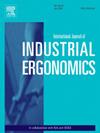Pilot workload measurement model based on task complexity analysis
Abstract
Developing pilot workload assessment method is conducive to improving pilot work efficiency and enhancing the reliability of flight operations. In this study, a pilot workload model based on task complexity analysis is built to predict the changing trend of workload under various task scenarios with different task difficulties. Based on multiple resource theory and entropy theory, a pilot workload model is constructed by integrating the analysis of node task complexity and structure task complexity. Further, the Bedford scale and time pressure survey are both adopted to subjectively investigate the workload of 25 flying cadets in the traffic pattern task to verify the model. The correlation coefficients between the theoretical prediction results and the actual measurement results are not less than 0.85, supporting the validity of the model. Besides, compared with the original Bedford workload scale, consideration of time pressure can effectively improve the consistencies between the theoretical prediction results of the model and the actual evaluation results of the flying cadets, indicating the advantage of strengthening the time pressure dimension when using the classic Bedford workload scale to measure the pilot workload. The pilot workload measurement model based on task complexity analysis proposed in this study can provide method support for the optimization designs of flight tasks and pilot training.

 求助内容:
求助内容: 应助结果提醒方式:
应助结果提醒方式:


